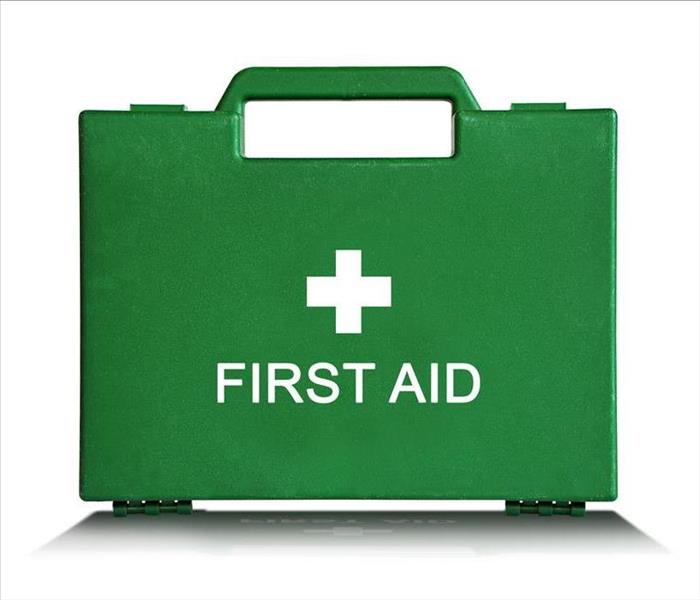Your OSHA Compliant First Aid Kit
4/12/2021 (Permalink)
As a facility owner or manager, you have a lot of responsibilities, and one of the most important is protecting the safety of the people inside your Layton, UT, buildings. To that end, a well-stocked first aid kit is crucial, and it's an important part of OSHA compliance.
Focus on the Goals of First Aid
Workplace first aid must provide for the temporary care of an injured person until medical professionals can provide the necessary care. The primary goals of providing first aid are:
- To preserve life
- To prevent further injury
- To promote recovery
OSHA-Required Basics
Start with the basic items required in an emergency kit and adjust the numbers of items by the number of people in your buildings:
- 4x4-inch gauze pads
- 8x10-inch gauze pads (at least two)
- 1 box of adhesive bandages
- 2-inch-wide gauze roller bandage
- Triangular bandages (at least two)
- Two elastic wraps
- Scissors
- Adhesive tape
More Items Required by OSHA
After including the basic items you need for treating common injuries, add supplies to improve the quality of first air care:
- Latex gloves
- Sealed moistened towelettes or other sterile wound cleaning agent
- Tweezers
- Burn spray or cream
- Burn dressing items
- Eyewash stations and refill solution
- Splint
- Blanket (at least one)
- Resuscitation equipment
Items Not Required by OSHA
You could also include items that increase the comfort of individuals in the workplace:
- Allergy relief
- Cold relief
- Headache relief
- Antacids
Education for Providing First Aid
In addition to filling your first aid kit with these necessary items, you should also be prepared for the most common workplace medical emergencies:
- Heart attacks
- Respiratory distress, such as asthma attacks, allergic reactions, and choking
- Seizures
- Shock
- Stroke
First aid and emergency response training sessions should be scheduled regularly, so your employees are prepared to act appropriately when emergencies take place.
Are You Prepared?
The care you put into stocking and maintaining each first aid kit in your facility is critical, not only for protecting the safety of the people but also for remaining compliant with OSHA guidelines. What steps have you taken to prepare for emergencies and keep your facilities safe?






 24/7 Emergency Service
24/7 Emergency Service
